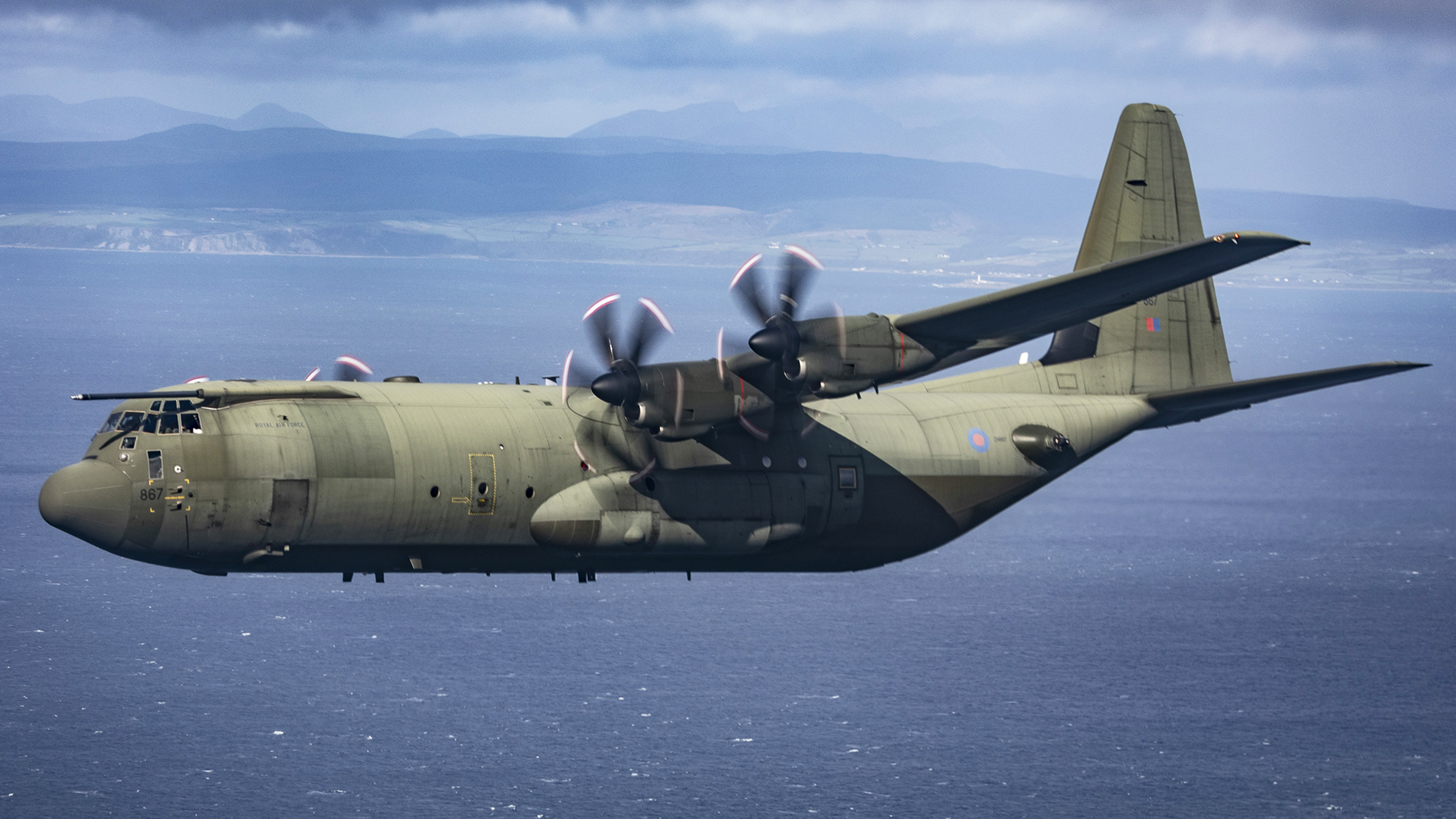The C-130 Hercules is almost certainly the best-known military transport aircraft in the world, and, with its unrivaled production record, it’s outlived many of the far more glamorous fighters and other combat jets with which it might be (less than fairly) compared. Despite many epic missions flown during its long service career and some remarkable attributes of its own, we don’t so often get to hear from those who have flown it.
On such pilot, former Capt. Scott Bateman MBE, learned his way around the legendary Hercules during an 18-year career with the U.K. Royal Air Force. After joining the service in 1990, the first part of his career saw him as an air loadmaster on the Hercules. In 1997, he was selected to train as a pilot, giving him a very different perspective on the C-130. In the process, he experienced the transition from the old C-130K (broadly equivalent to the U.S. Air Force’s C-130E) to the current state-of-the-art C-130J.
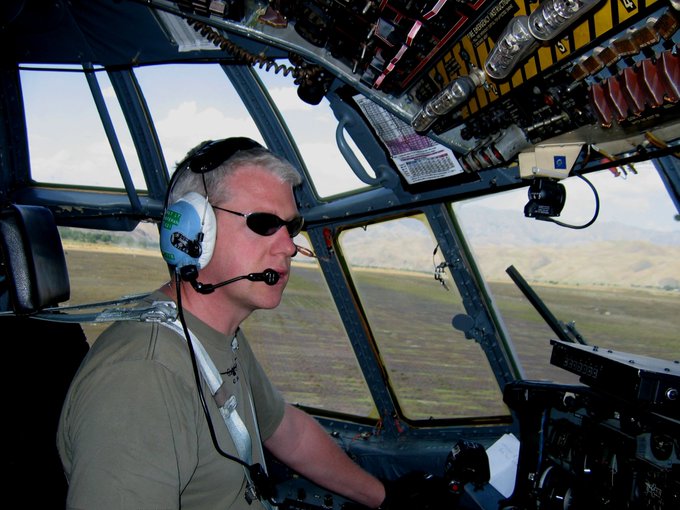
Scott had left the Royal Air Force before the controversial decision was made to withdraw the Hercules fleet. After 56 years of service, the last of the RAF’s C-130Js were retired on June 30, 2023, leaving some big questions about the ability of their successor, the Airbus A400M Atlas, to take on the whole of the diverse mission set. More on that later.
Scott’s first book, Hercules, is published today and he recently sat down for a virtual interview with TWZ to reflect on his relationship with the aircraft.
Face-to-face with a (noisy) giant
I’d never really seen a Hercules before I got posted to one. I’d kind of seen them around the periphery but I’d never been inside one before I got posted [to RAF Lyneham, in England, the former U.K. Hercules ‘master base’] as an air loadmaster. I’d been in a trainer, a mockup which they had at RAF Finningley. Really, the first time I arrived at Lyneham was the first time I’d really seen one, and here’s this aeroplane the size of a Boeing 737 and I’m going to be in charge of everything that’s behind the flight deck as a loadmaster. And you just think, ‘Oh my god, this is enormous.’ And you compare it to the C-17 and the A400M Atlas now, and it’s not that big, but at the time, this was a big, big aeroplane for me, and a massive leap.
The other thing that strikes anyone who’s flown in a Hercules is noise. It is the noisiest aeroplane ever. It’s designed to carry freight, it’s not designed to carry people, so the creature comforts are few and far between. And that includes toilets. The toilet is a little honey bucket that sits six feet in the air and if you need to use it, it comes down. It’s not the most glamorous of aeroplanes to fly as a passenger.
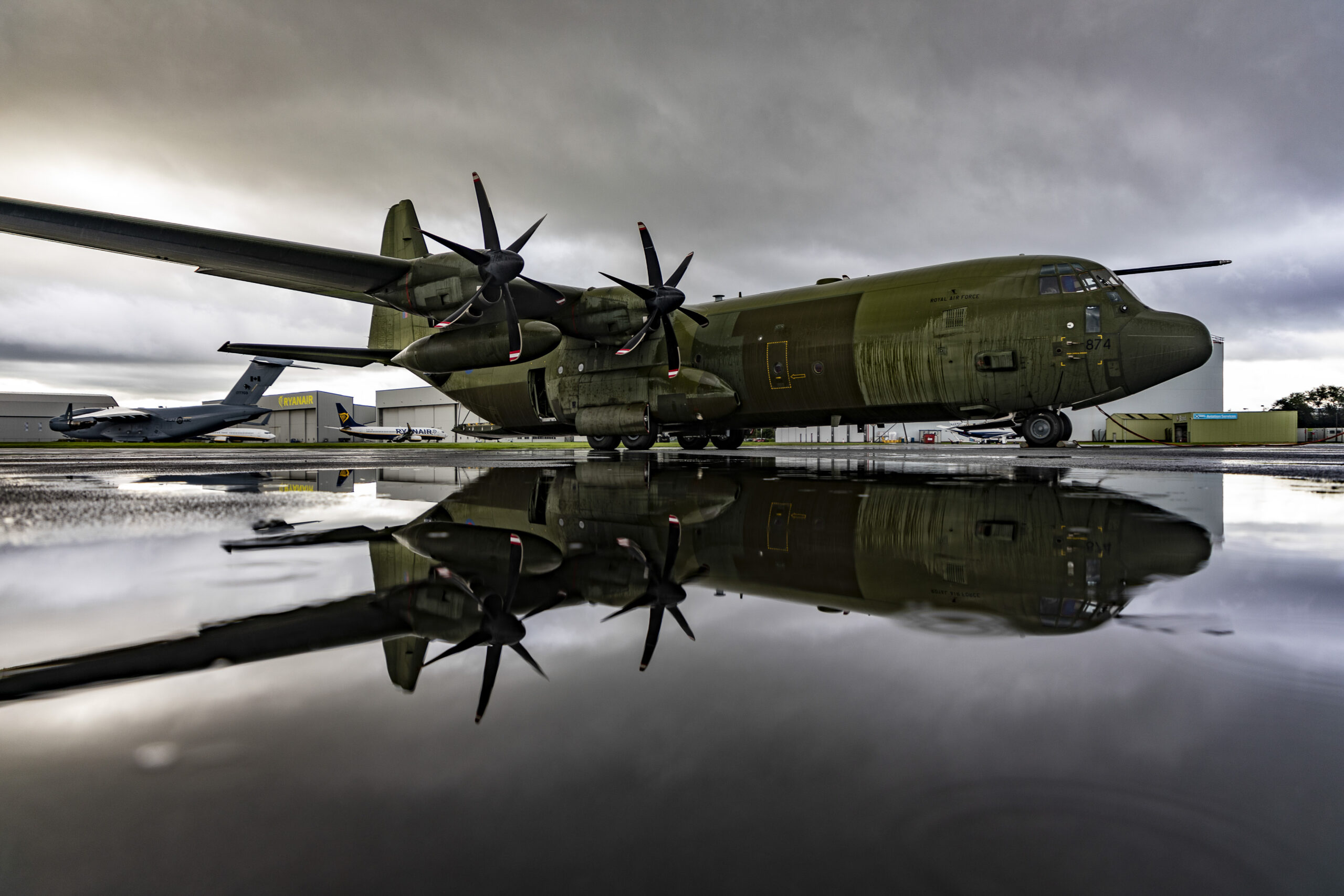
The best view in the Air Force
I think the one thing that the C-130 has that no other aeroplane in the inventory has, and I include the C-17 and A400M, is the view out the flight deck — the view out the flight deck is amazing. You’ve got so many windows: windows behind you, windows above you for when you’re taking it into tight steep turns. You can look through the brow windows and also you can look down, through the two windows which are below your eye level.
I don’t think I’ve ever been in an aeroplane — until I flew the Airbus A350 — with such a good view out of the flight deck. On all the others, looking out of the windows on the flight deck is kind of an afterthought. With this aeroplane, tactical awareness out of the window was a big thing. So big windows, lots of light. It was a real joy to fly in that respect.
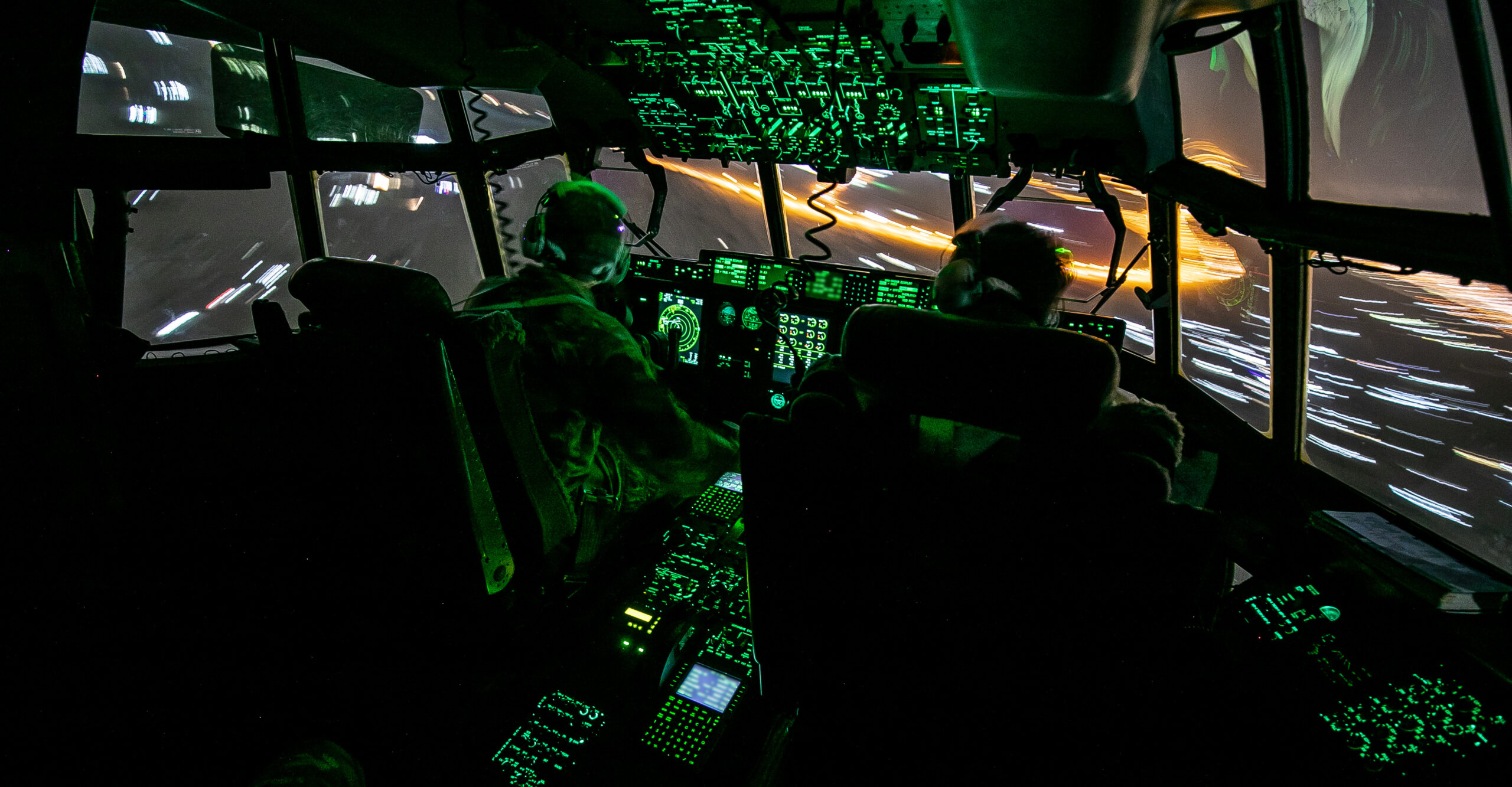
Tracking the technological pace of change from the legacy Herk to the C-130J
If we look at the K model, or the E model as the Americans would refer to it, it was built with late 1960s technology, and it didn’t really change at all.
In terms of technology, when I first started out, the Hercules didn’t even have GPS. We were using Doppler and Decca and LORAN C [a radio navigation system using low-frequency signals]. And you know, people look at you and say ‘LORAN C? That was used for submarines,’ but we used it for aeroplanes as well. There would be someone with an oscilloscope back here, the navigator trying to figure out where you were. We actually had a periscope that we could put up, with a sextant to take star shots to find out where we were when we were out over the Atlantic.
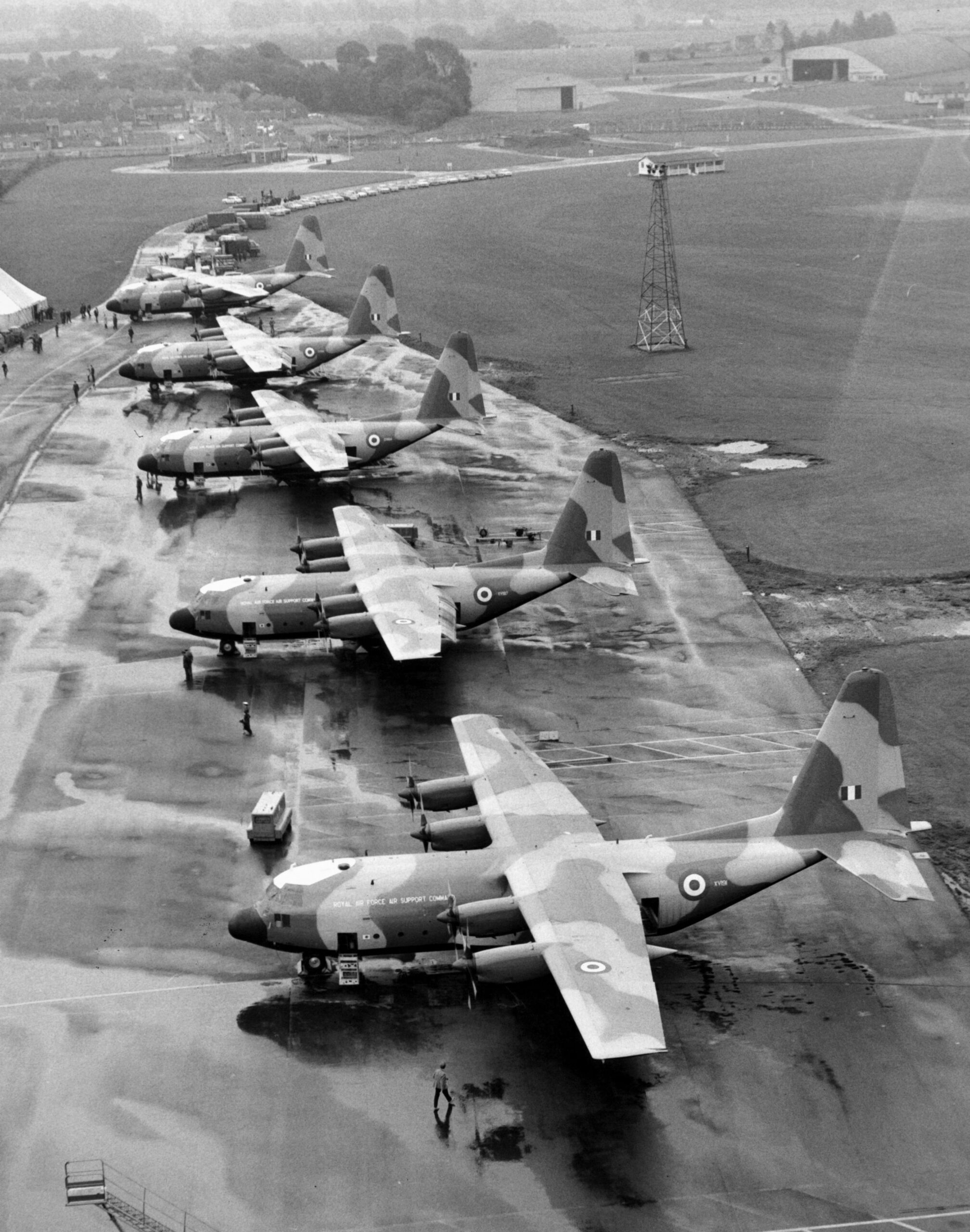
Every airliner back in the 1980s had got rid of their navigators, got rid of their flight engineers, and moved onto glass cockpits and integrated avionics. The military had never really done that with the C-130 and I think when the J came out in the 2000s it was a chance for them to leap two or three generations of avionics and integration. It really is like comparing a 1970s Ford Fiesta to a Tesla in many respects, in terms of the leap in technology going from steam dials to glass panels, to head-up displays, to the integration of your flight management computer where the pilots can manipulate all this information. There is now a lot of automation: you put the data in and you follow the ‘pink string’ [a route line shown on the cockpit displays] whereas back in the day, we were literally using a map and the Mk 1 eyeball and a navigator using Doppler in the back. All those things are gone but gone for the right reasons.
The C-130J also brought full integration of night-vision goggles from the outset, which was an afterthought on the E or the K models, and which really makes it a super-capable platform. If you look at most head-up displays, they’re quite small. The one introduced in the C-130J is enormous and I think that really was one of the great things — it put all this stuff in front of you. Being able to get rid of the navigator and the flight engineer was a blow to the socializing, but actually, it made it a better aeroplane.
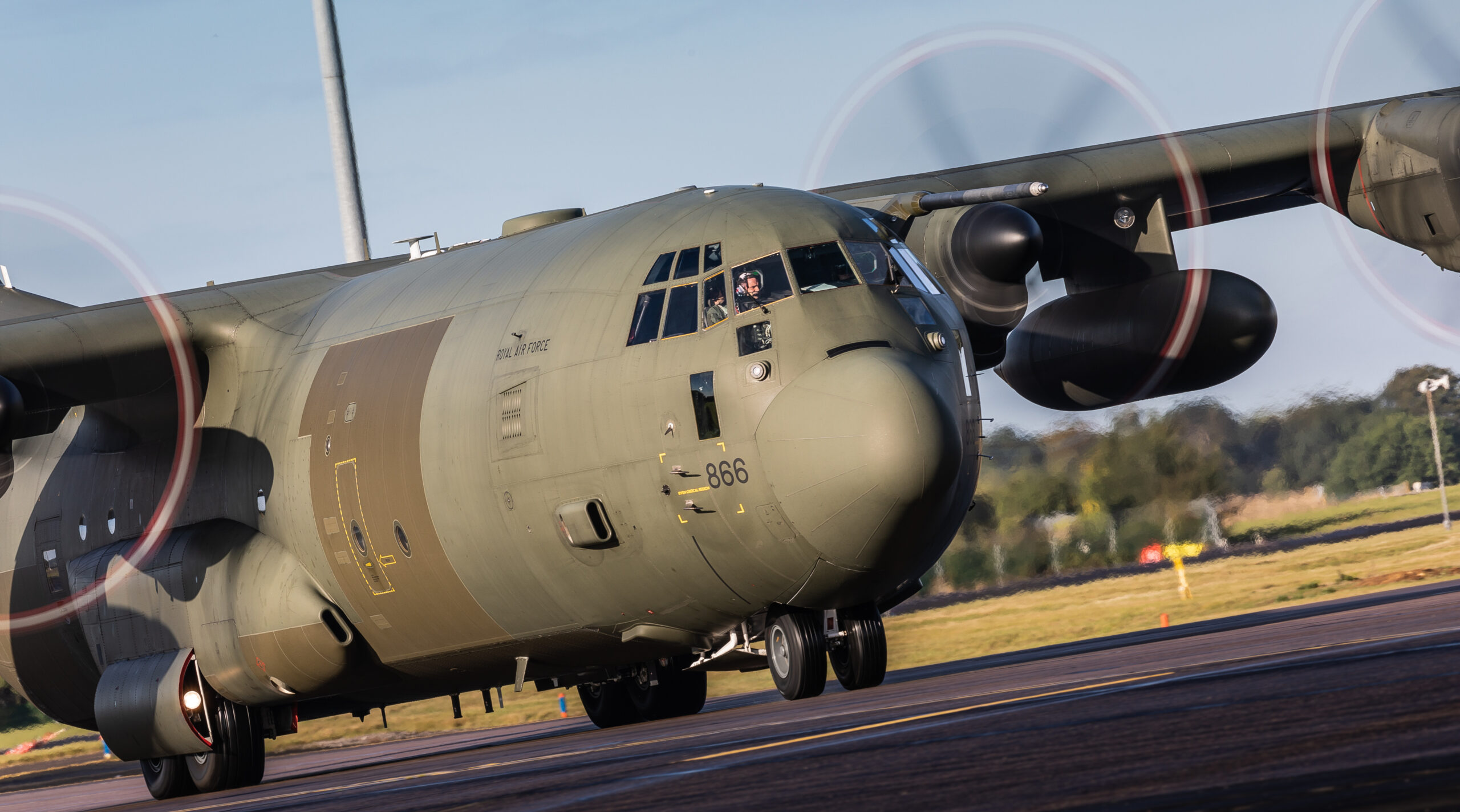
More than just a Super Hercules
The shape of the J model is the same stalwart shape of the legacy Hercules because the shape worked and the wing worked. What didn’t work was the engines: engine technology had leaped forward four or five generations.
It’s like apples and oranges, they look a little bit similar from the outside but actually, at heart the C-130J is so different that it makes it almost a different aeroplane. They called it the Super Hercules but actually, it wasn’t really a Hercules, it was a clean-sheet design for something much better, with FADEC-controlled engines, which were a massive improvement.
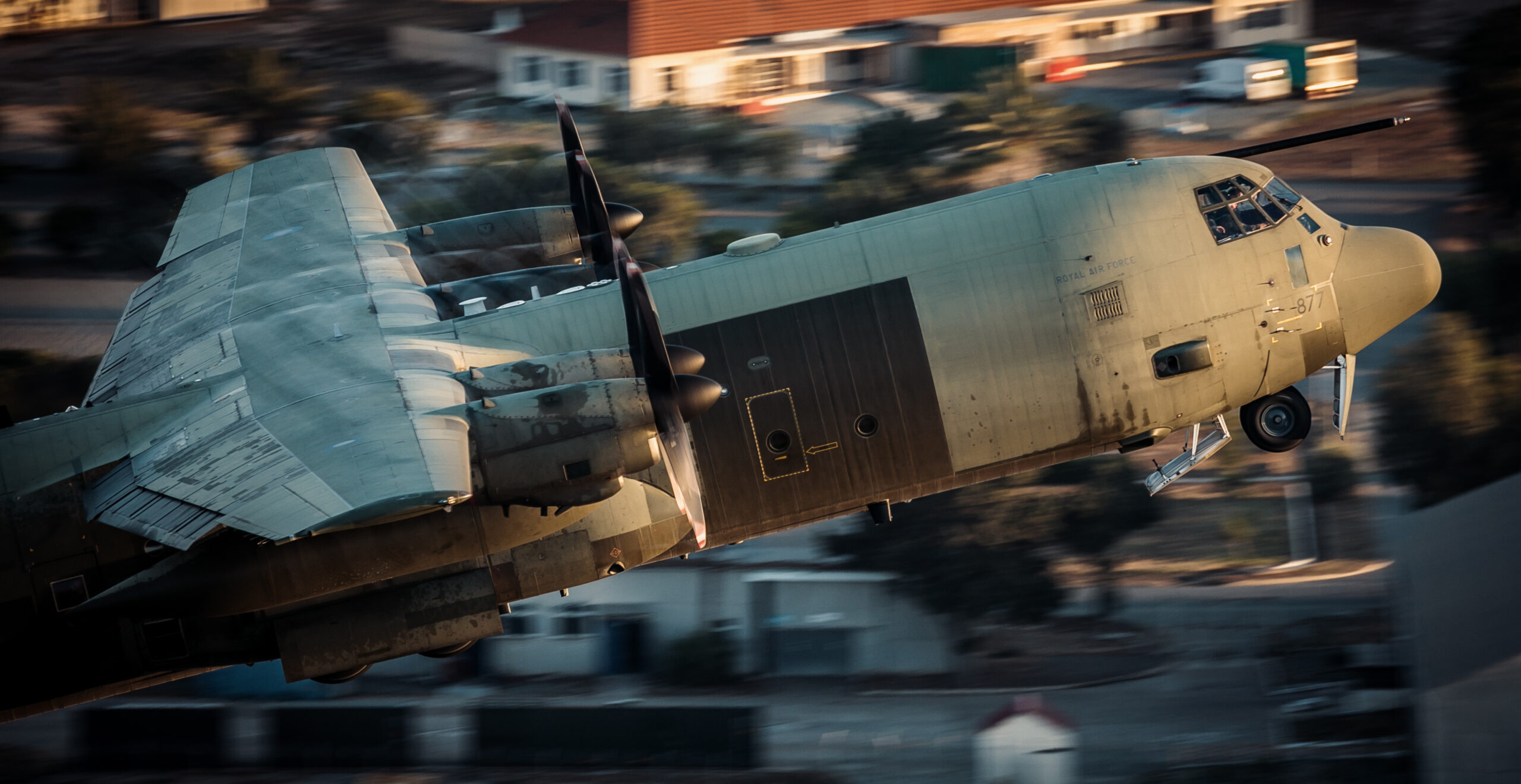
On the E model or the K model, you could easily over-torque or overtemperature the engines. You just can’t do that on the J. You just ram the thrust levers to the end, and you let the FADEC sort it out. I can guarantee, you did that in the K model and the flight engineer would hit you across the head with his ruler so hard that you would never touch the thrust levers again.
The hardest missions, high and low
Two different types of missions spring to mind in terms of the very different challenges they presented, for different reasons.
The first one is HALO [high-altitude, low-opening parachute] drops. High-altitude parachuting is a very niche skill, only a few crews held the qualifications to be able to do those flights. And the process of getting people to that altitude to be able to open the doors and allow them to jump out is exceptionally complex. It’s done with great care and safety because you’re dealing with humans.

For me, dropping HALO troops is a really complex function. It’s not just climb up to an altitude and they jump out and that’s it. There’s a lot that goes into getting to that altitude and that point where you can open the door, and someone can jump out. Not that I would want to jump out from that altitude — or any altitude!
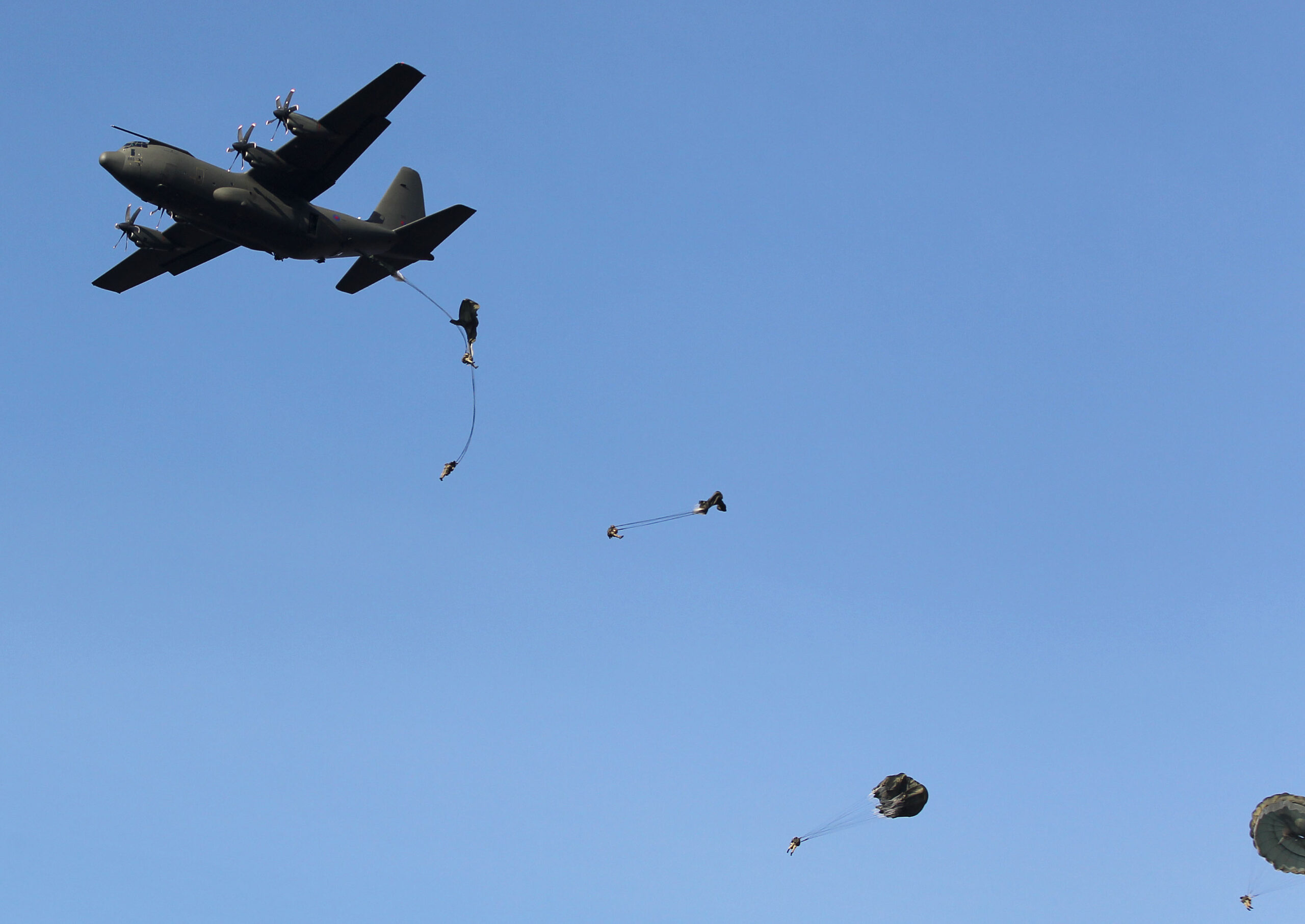
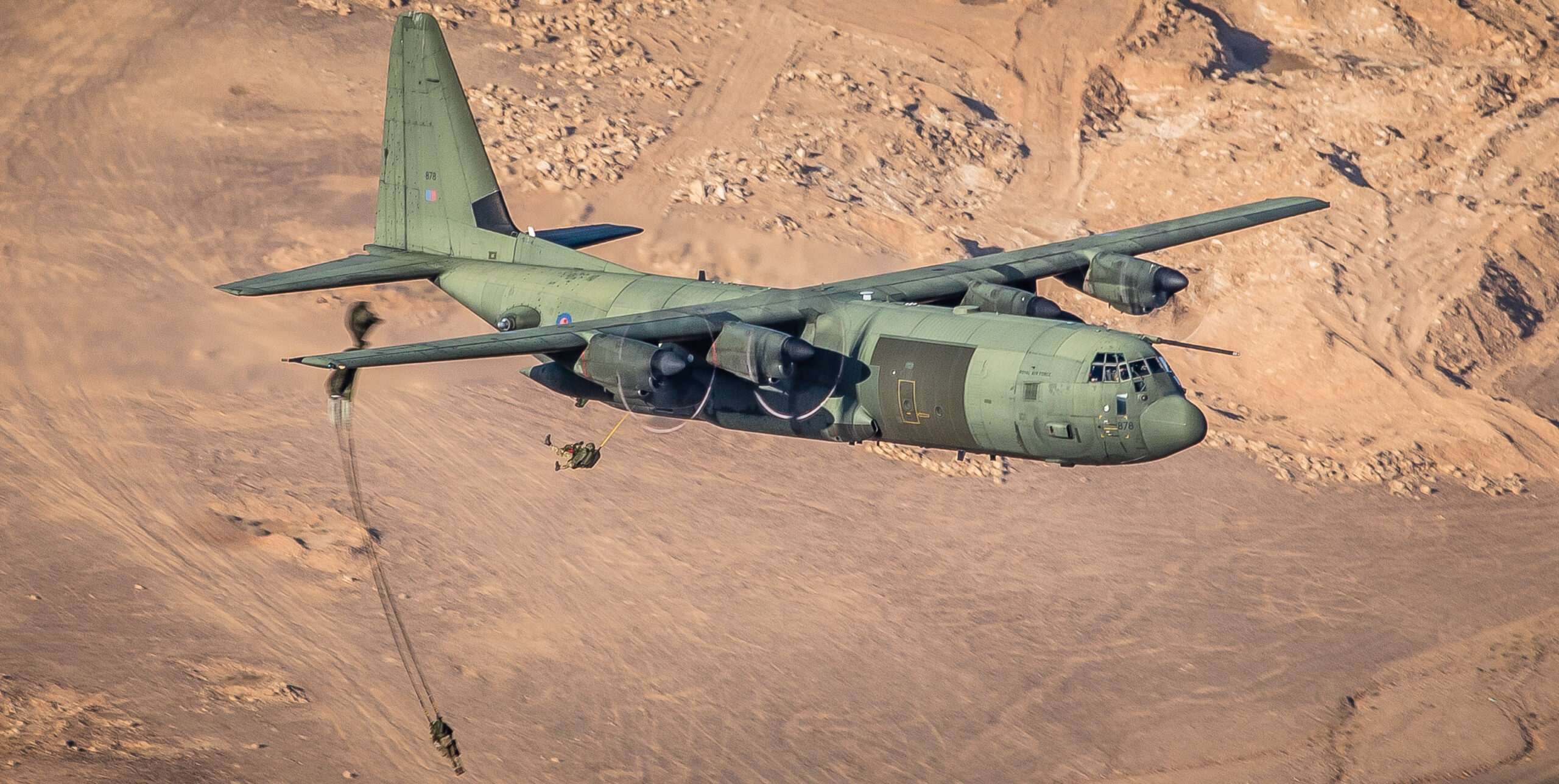
The other really challenging mission, I think, is dropping heavy loads. So things like what they call the Medium Stress Platform [MSP]. You’re looking at something near 20 tons. Two platforms, 10 tons each, going out in probably under two seconds. This is complex to rig for the loadmaster, so the loadmaster takes hours and hours to rig this load to make it work. In terms of the space, there are roughly three inches around this load within the airframe and, when it leaves, and it goes from zero to 150 miles an hour in about three feet.
Basically, a massive parachute deploys out the back of the aeroplane, the load stands still, and you fly off, in essence. The load has a cable inside that basically holds on until it gives way and that means that the load has enough impetus to go straight out and won’t tip over and take your tail off. So you’re a heavy aeroplane, at exceptionally low level, at exceptionally high weight, and trying to maneuver to get this load in the right place. Those kind of heavy loads that are complex are the most challenging to fly accurately and it takes masses of capacity to fly those accurately. And that’s why you see now, big heavy loads like boats, for example, aren’t dropped from the A400M.
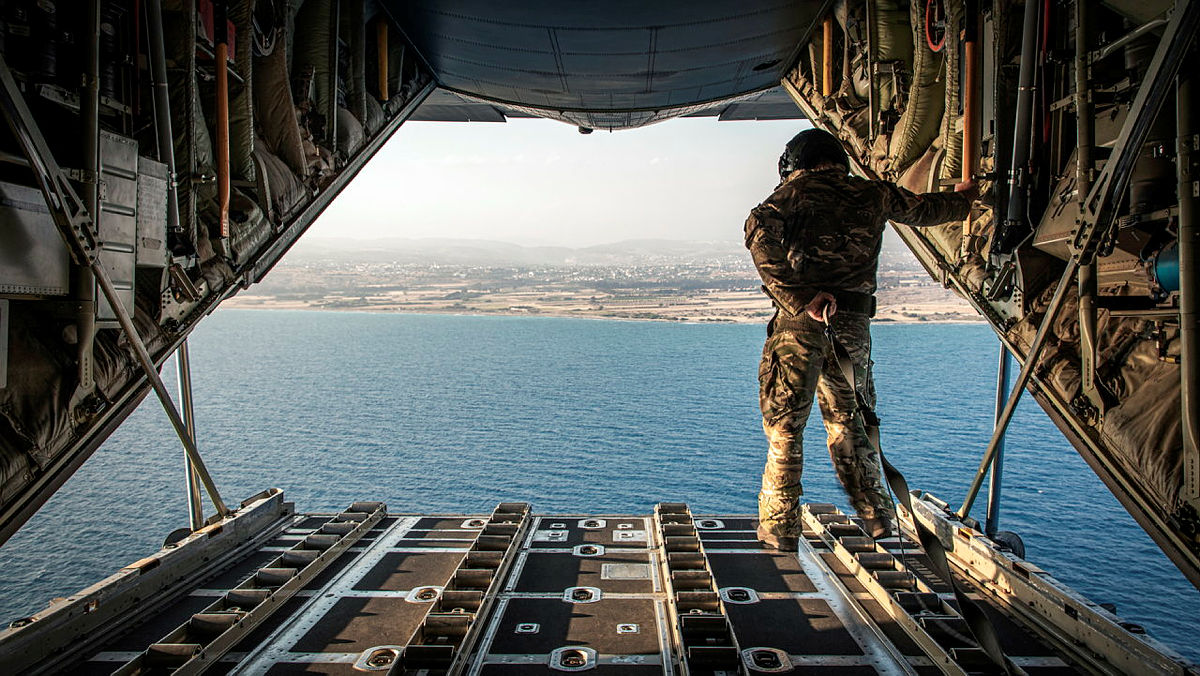
When the RAF first got the C-130, it had no self-defense measures to speak of
When we bought the aeroplane back in the late 1960s and it was delivered in the early 1970s, it was never envisaged that this would be a ‘tip of the spear’ asset. This would never be a tactical aeroplane. It was always going to be the ‘removals van,’ and it was always going to move stuff from the base to the front-line-ish, but never go across the front line.
The Falklands changed that initially. You had fighters that were challenging Hercules. We also needed an air-to-air refueling capability which was literally designed from stuff they found in a scrapyard.
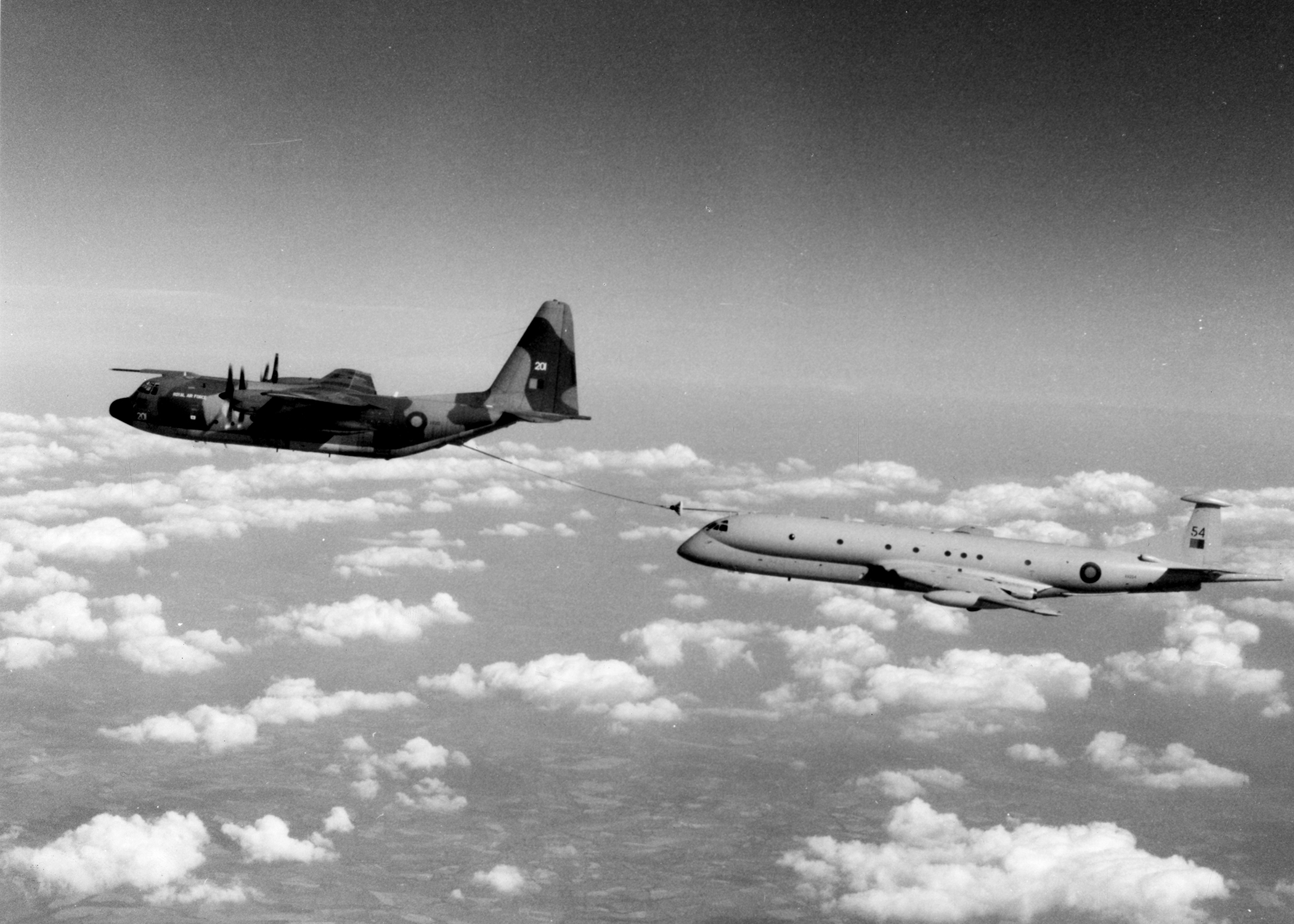
If the first step change was the Falklands, then the next step change was the beginning of the 1991 Gulf War. The first night, they went in with no defensive aids. When we were first going in there on that first night, we had pilots who didn’t even have flak jackets. The aeroplane wasn’t armored in any way, shape, or form from small arms fire. We had crew members sitting on chains which they put in the seat bottoms to give them some protection if somebody was shooting from below. Not sure if that would have worked, but in their mind a steel chain wrapped there was going to give them more protection than not.

I think after that initial experience in the Gulf where people went ‘Hang on a minute, the Brits have got nothing, this is quite embarrassing,’ I think that was the second step change. Then we saw real investment in the platforms — particularly what they called ‘the mini fleet.’
The mini fleet, which was six aircraft, was hugely invested in. They had an enhanced vision system — a linked infrared vision system, we ended up with MX-15 turrets, and we had proper armored flight decks, which was fantastic. And then we started to go from having the infrared countermeasures that we had for beating the surface-to-air missile threat in Northern Ireland — which were nothing more than a big infrared lamp if I’m being honest — to seeing things DIRCM and LAIRCM becoming available on the aircraft.
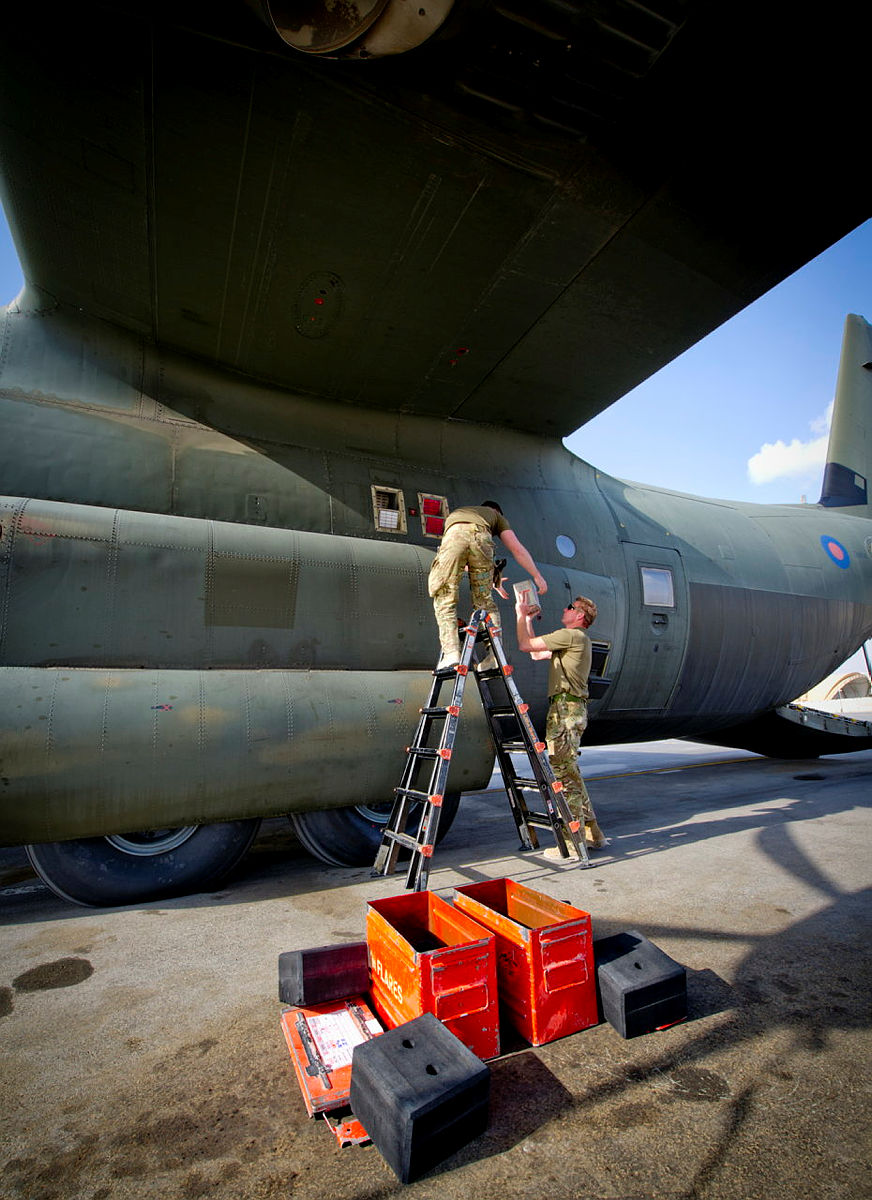
DIRCM for us was the biggest leap forward really, linking that in with MAWS [missile approach warning system], it was really, really great. But we didn’t see ESF [Explosive Suppression Foam] come in. And actually, that’s a theme throughout my book. ESF was really never thought of as being required for the aeroplane because it was never going into that threat environment. But sadly it did, and we lost an aircraft, in Iraq, in part perhaps because ESF wasn’t fitted. I’m not saying the aircraft wouldn’t have been downed, but there’s a school of thought, and I subscribe to that, that ESF perhaps would have prevented that accident.
Going to war in the Herk
Actually, I think every time I got behind the column, some people would say that was the scariest mission for them!
But I think Afghanistan was really the scariest for me. Every day you faced a threat. I was there very early in the conflict, way before the likes of Camp Bastion [the largest postwar operational British military base] were even thought of, never mind built. There was only one aeroplane in theater at the time and we were working quite hard both day and night. Flying in daylight in Afghanistan in a Hercules came with a unique set of threats, not only from an environmental viewpoint…
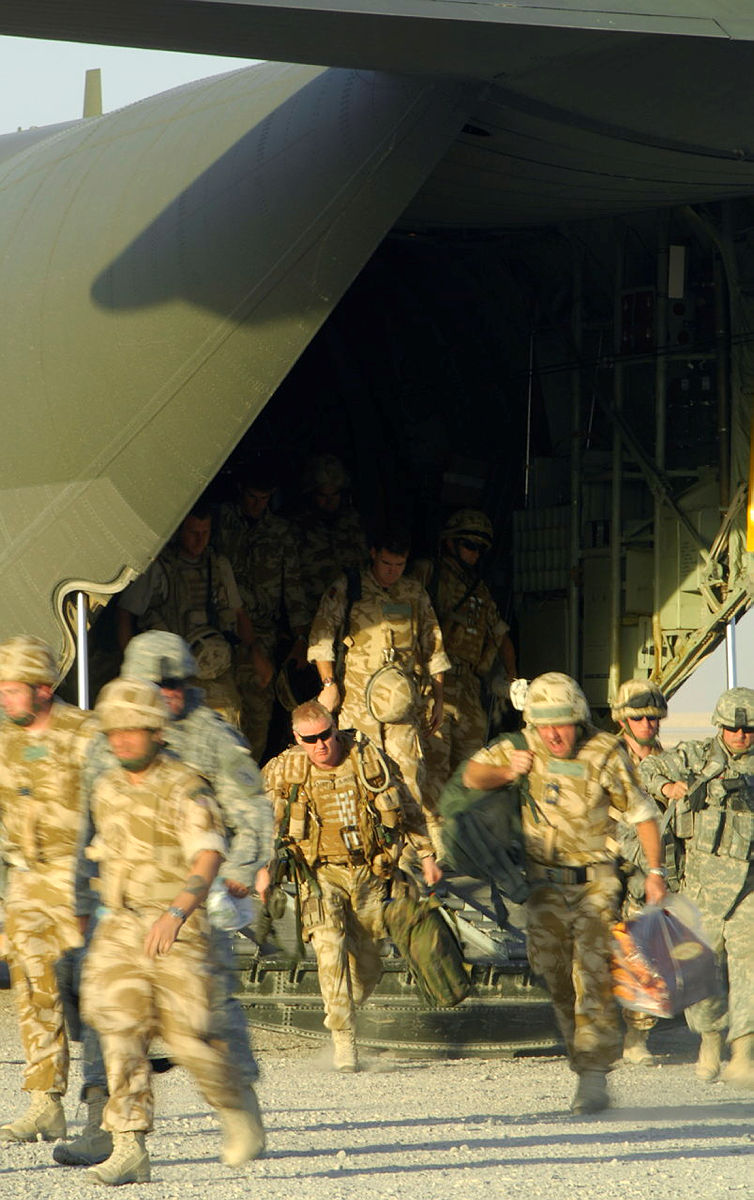
The threat from proper surface-to-air missiles was greater in Iraq, but for daylight missions in Afghanistan, RPGs and small arms were a really serious threat and most of the airfields we were going to were not protected. So they didn’t have a protection zone around them. These airfields are, in some cases quite rudimentary. So you’re arriving, picking some people up, and taking them somewhere else because they can’t drive there because it’s so dangerous.
Flying in the daylight in Afghanistan was the most challenging, and people took potshots at you and you’d see the occasional RPG, but touch wood, we were very fortunate and didn’t get anywhere near any hits.
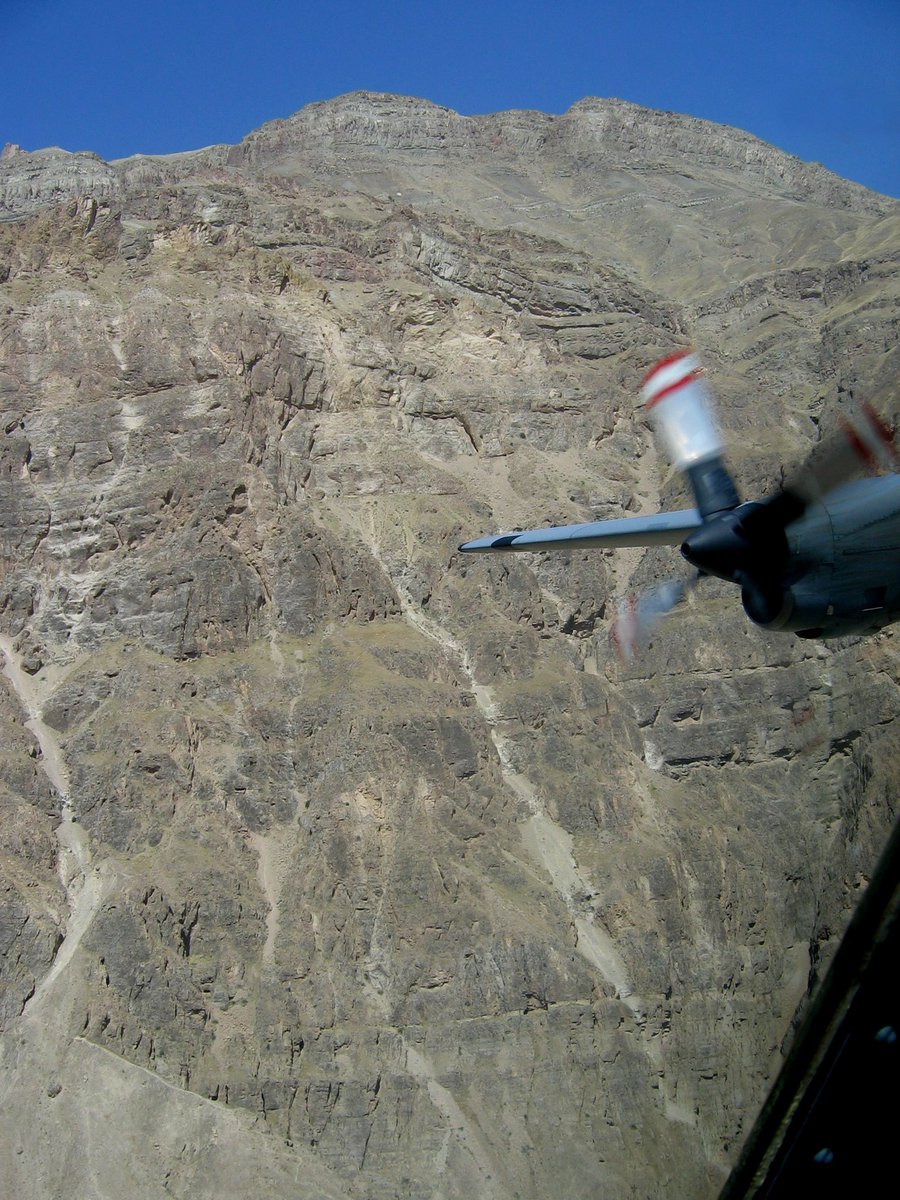
The mystique of 47 Squadron — just don’t call it Special Forces
47 Squadron seems to have this legend that goes around, but we’re just humans.
The final iteration of the squadron started off back in the 1970s having a small group within it. That group got bigger and bigger and eventually, by the late 2000s, the entire squadron was dedicated to supporting specialist troops. And the squadron had two tiers within it. A tier one support and a tier two support. I was never tier one, I was in the other part, what they called the main squadron.

I hate to use the word elite, but its role was seen as elite. We aircrews were not elite in any way shape or form. But the role was certainly a niche role, that parts of the squadron fulfilled. And I think globally, because of that, like 7 Squadron in the Chinook world, it has a bit of mystique around it which people are always willing to fuel. Because why wouldn’t you fuel that mystique?
But the squadron had humble beginnings back in Khartoum in 1917-18. That is where it did its first missions as a squadron.
If you wear the flag, you’re in the gang
The squadron is unique in the Royal Air Force in that it is the only squadron to have ever fought under its own flag. So if you see 47 Squadron members, they will wear a tricolor flag which is red, blue, and yellow, which they’re allowed to wear instead of the Union Jack. This is because the squadron, back in the days of the Russian Revolution, was officially disbanded and became something called A Flight, which fought in the Revolution on behalf of the U.K. The squadron commander was even appointed as the first governor of Crimea, which is bizarre if you look at where we are politically now.
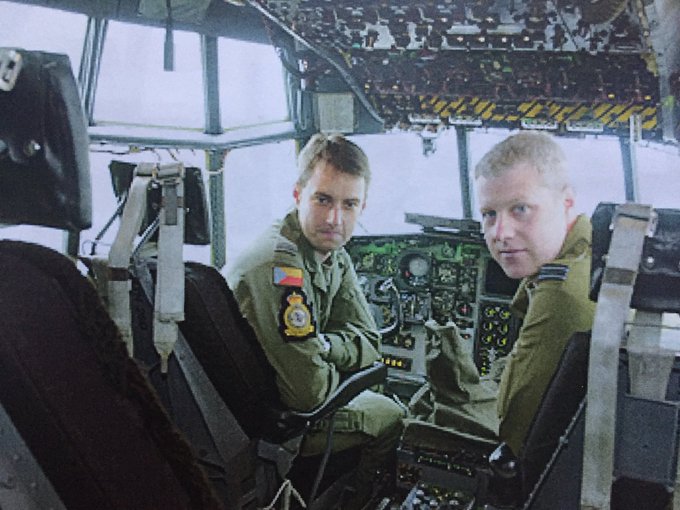
After being rebadged as 47 Squadron, the crown essentially gave them the right to retain the flag, which actually adds to that mystique around it: if you wear the flag you’ve been in the gang.
A unique camaraderie
Other communities within the RAF probably look upon Hercules guys and girls as dirty, smelly, propeller types! But I think that every squadron is a community. Whether you’re on a fast-jet squadron or a helicopter squadron, that is your family and I think if you are deployed with the same people all of the time, you get to know those people really well.
The Hercules has such a big crew — sometimes you could be going away with seven or eight people as a crew, with the ground support staff, ground engineers — you could be living with these people for months. I think that helps to gel the squadron into lots of little groups, and then you’ll mix that group with this group, so not only do you work with these people, you live with these people. You understand their fears, their loves, their joys, all of these things, and I don’t think that anyone who’s not been in that environment would understand that camaraderie.
You wouldn’t get that in an office.
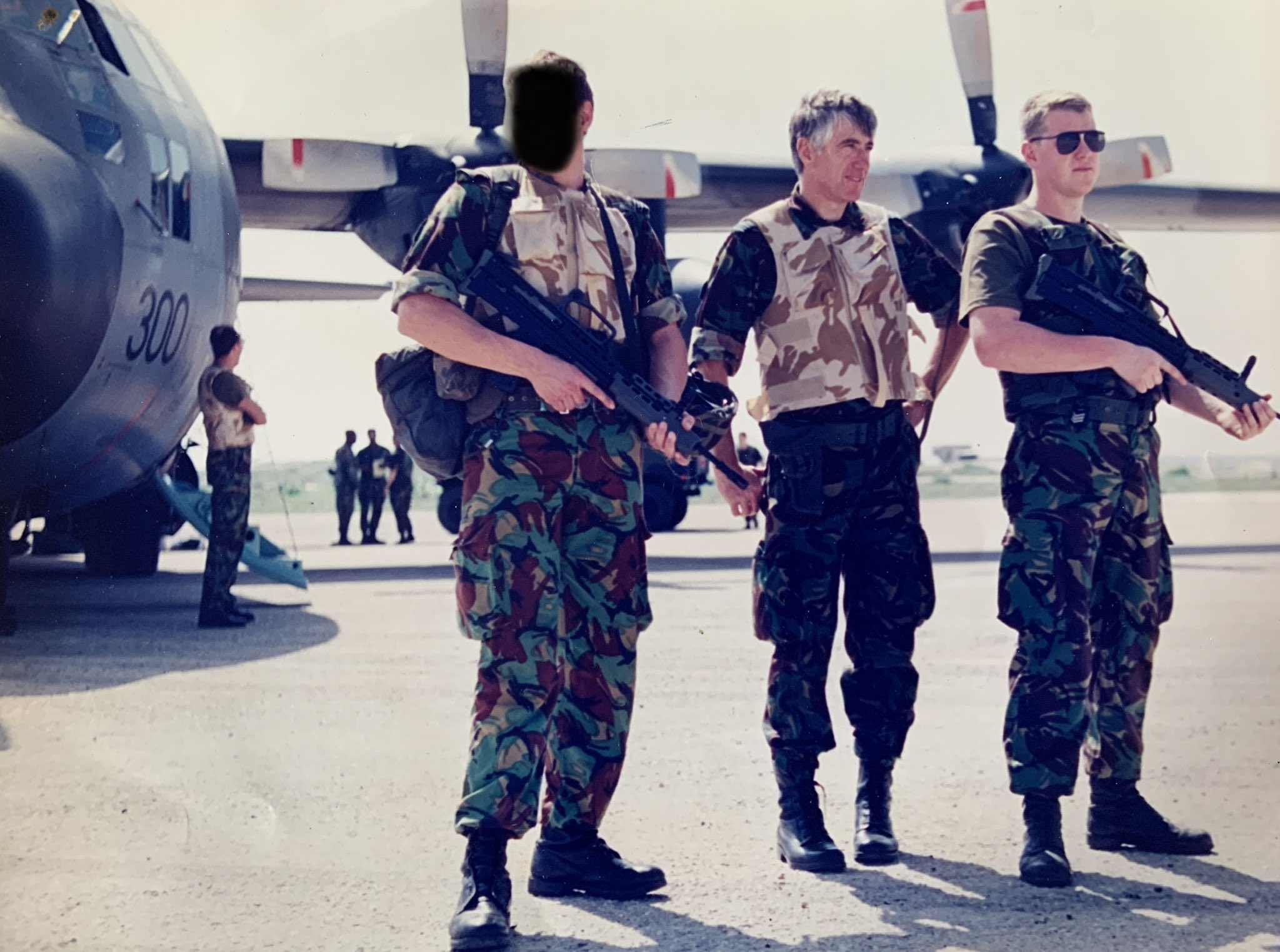
I have, even now, absolute trust in the people that I worked with. We still see each other today, even though I’ve been out of the Royal Air Force for 16-17 years now. On a daily basis, I will text buddies who I was in there with. It makes bonds for life.
Joshua Shani: My Hercules hero
Lt. Col. Joshua Shani, Israeli Air Force, was the lead pilot of the Entebbe Raid, in July 1976. This was by far the largest and most audacious raid that anyone has ever done in a Hercules. Shani led a formation of four C-130s and he was 29 years old when he did that. The raiders saved every hostage that was at the airport. Only one of the special forces troops was killed — Yonatan Netanyahu, Benjamin’s brother.
Entebbe is, for me, the most audacious raid ever. Nothing anyone else has done really gets anywhere near that.
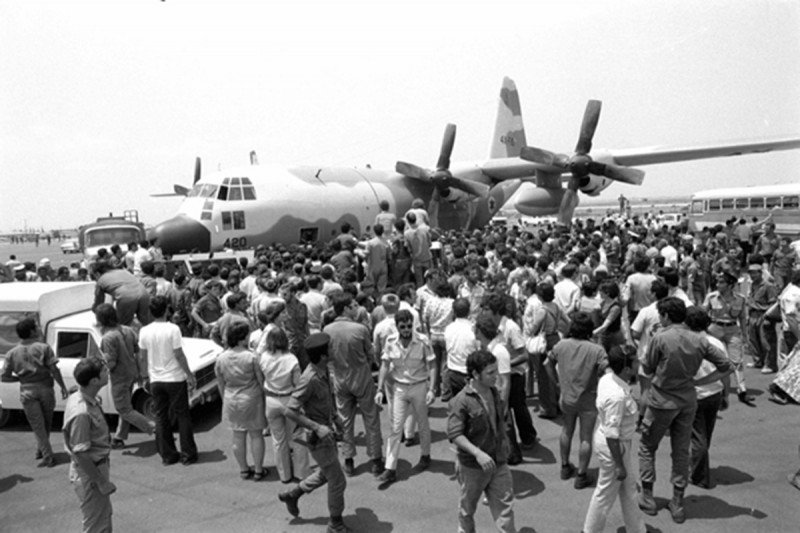
The A400M: Good, but not quite a Hercules replacement
The A400M, from its outset, was never designed to be a Hercules replacement. Lockheed Martin was a key partner when the A400M was being designed, but that kind of slips people’s minds, that Lockheed was part of that coalition. And the A400M was marketed as a gap-filler between the C-130 and the Transall at one end, and the C-17 at the other end — there was nothing else in that mid-market air transporter range. And the A400M had the ability to be a tactical aeroplane and a strategic airlifter. There was just nothing else in that group, once the C-141 was gone.
So this was a new, clean-sheet idea and for that it’s amazing.
What it’s metamorphosized into, for some reason, and I imagine that’s related to politics and cost, is that this is going to be a replacement for the C-130. If we look at other countries that have kind of followed that, for example, Germany, the Luftwaffe thought they’d replace their Transalls with the A400M, but they’ve decided that now they’re going to have C-130Js too.

Because the A400M just isn’t a direct replacement. It is a tactical air transporter that has turboprops but otherwise, it’s in a completely different category. It can go further, faster, and carry more. And that’s the RAF’s mantra and I get that, but the thing it can’t do is some of the niche capabilities that the C-130 can. It can’t stop as quickly on rough surfaces. It’s only recently been cleared to land on sand. Paratrooping from it is a challenge. Although they can do side-door paratrooping it is challenging because of the airflow coming off of the aircraft. As for some of the more niche loads like dropping boats, well, the U.K. Ministry of Defense is currently tendering for a capability to do that, because the A400M can’t do that currently.
There are some capabilities that will come, I have no doubt that they will come, in time. But what the Royal Air Force particularly has done, they’ve retired this capability before the next one is ready to take over. The A400M will get there, it’s just not there yet, which is a sad thing.
The only C-130 replacement… is another C-130
I think the United Kingdom will buy more Hercules. Honesty, I think we’ll get to that point.
I don’t think we’ll ever go back to a large fleet of C-130s, but I think we’ll do perhaps what the Germans have done and buy a small fleet, a mini fleet for niche capabilities. The kind of stuff that the A400M is unlikely without significant investment to be able to do. It’s stuff it was never designed for, to be honest. Trying to push that onto an airframe that was never designed for that is just folly, and you’ll end up spending a lot of money and not actually getting anything.
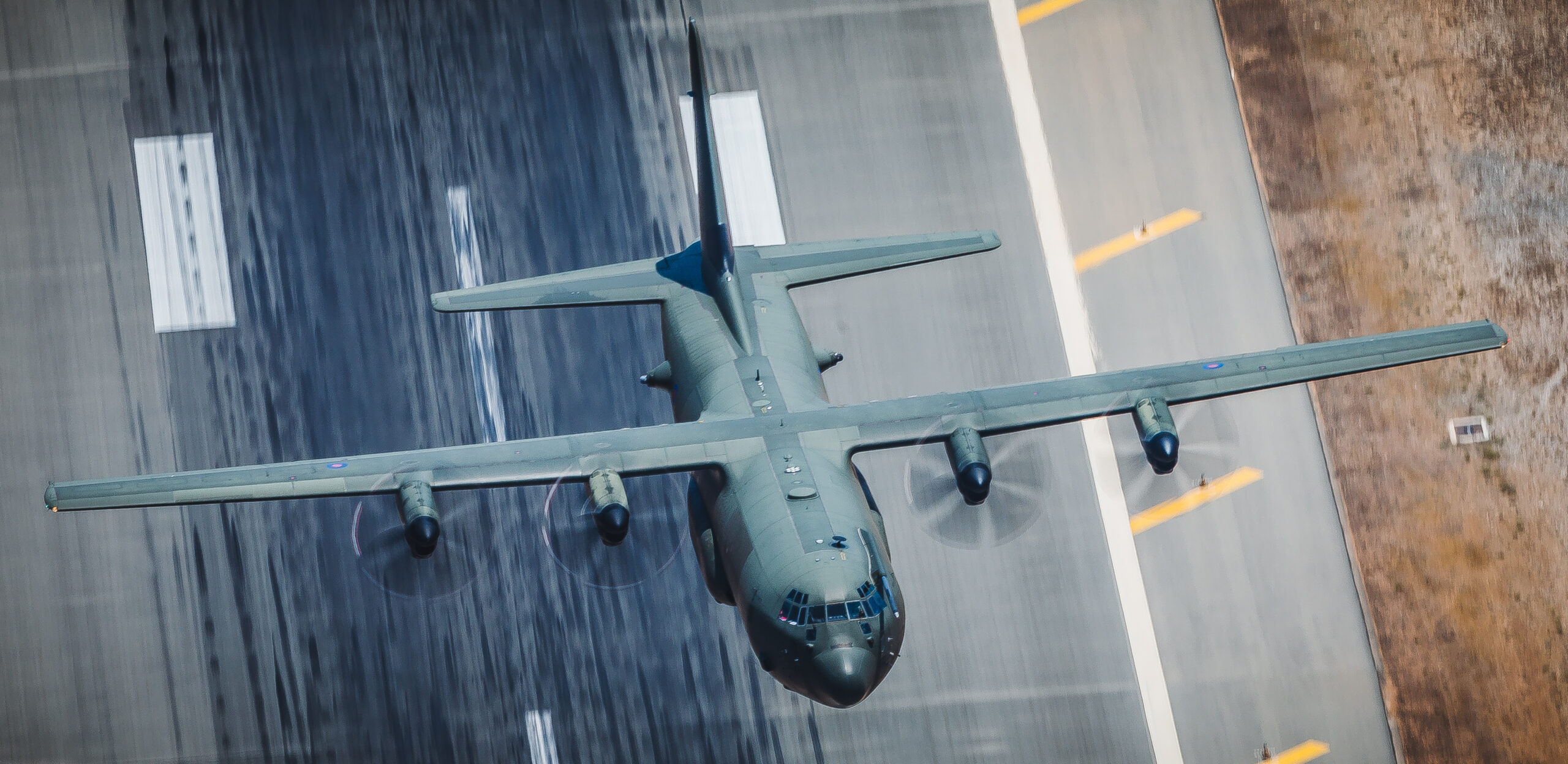
This year the Hercules celebrates 70 years of continuous production, a world record for any military aeroplane. I think that the C-130J will expand into other roles. The J model, and particularly the Special Forces MC-130J Commando II, is in big demand, huge demand. I think we’ll see more of those come off the line for USAF.
I also think we’ll see more European operators going back to it. The only real competition at the moment is the Embraer KC-390 in that market niche and I think that really hasn’t got much legs beyond some smaller countries.
I think 50 years from now, we’ll still see Hercules coming off the line.
So, you’ve been selected as a C-130 pilot
My advice for Hercules pilots? Learn to love sausage rolls and drink more tea.
There was a real generational shift from the K model, on which all we did was drink tea and eat sausage rolls.
The J model, when we moved away from Gen X into Gen Z, it was all about drinking water and going on the Peloton.
But seriously, I think if you’ve got the chance to fly a Hercules now, just enjoy it. It’s the most forgiving and beautiful aeroplane to fly.
Enjoy your time because it will be too short.
Scott Bateman’s book, Hercules, is published on May 23, 2024, by Penguin.
Contact the editor: thomas@thewarzone.com
